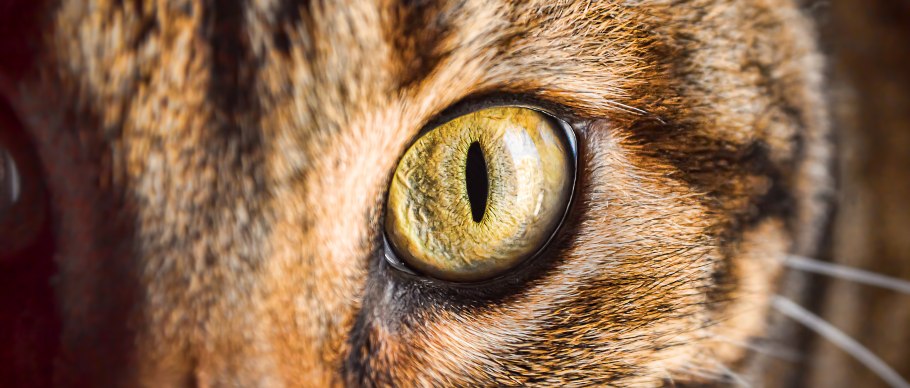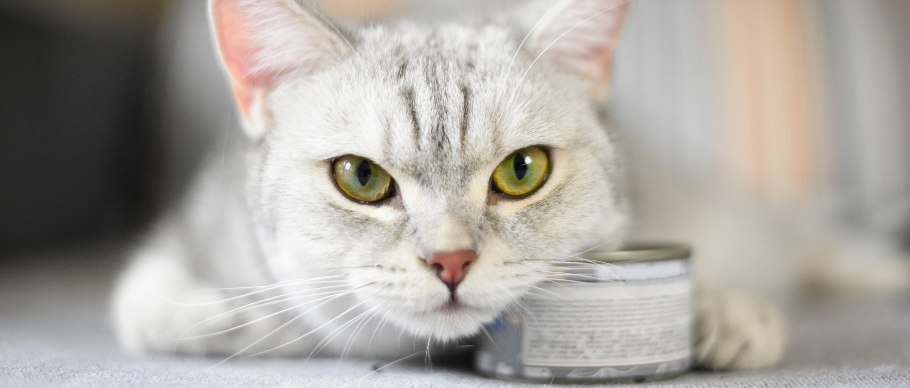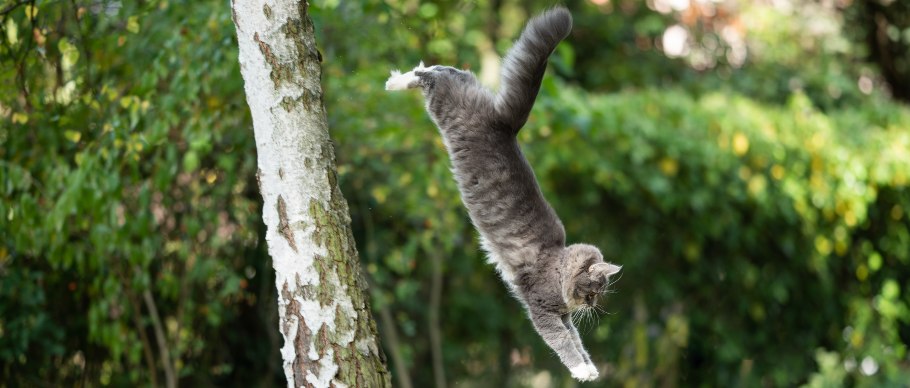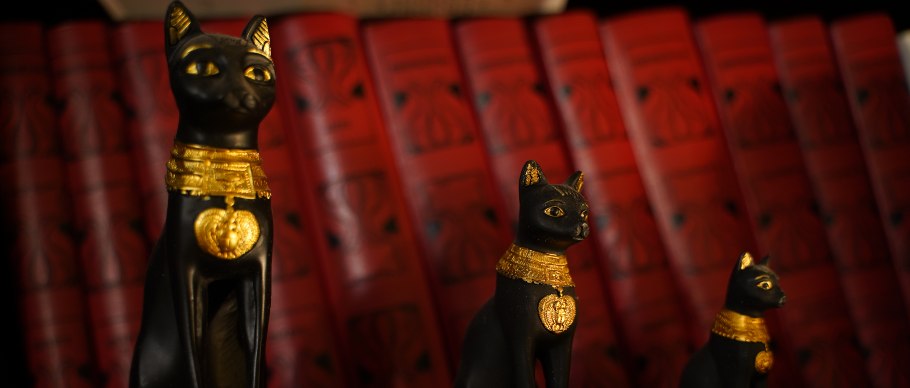Can Cats Drink Milk and 5 Kitty Myths Debunked
There are certain myths that have been associated with cats for years—and you have probably heard most of them at some point throughout your life! But have you ever thought about the truth behind these myths and pondered, “Can cats actually drink milk? or “Do cats really have nine lives?” We separate facts from folklore to share the truth behind the most common cat myths.
#1: Can Cats Drink Milk?

You likely have seen a feline friend drinking milk on television or in a cartoon. But the truth is most cats are lactose intolerant!
Cats typically only produce enough lactase—an enzyme that breaks down the sugar found in milk—when they are kittens; this lets them receive nutrients from their mother’s milk or a formula, according to Reader’s Digest. Once weaned, cats’ bodies make less and less lactase. Therefore, feeding cow’s milk to an adult cat likely will cause an upset stomach. However, some cats may not develop an intolerance to milk, especially if they have been exposed to it throughout their whole life. For a cat-safe Christmas, you may still want to avoid leaving the milk and cookies out this year.
#2: Can Cats See Color?

Yes, cats can see color. However, humans see more vibrant hues and a greater range of colors than cats do. This is because humans have ten times more cones—or nerve cells in the eyes that help differentiate colors—than our feline friends, according to the Veterinary Centers of America Inc. While some experts claim cats can only see in blue and gray, others debate they can also perceive yellow.
Cats do surpass humans when it comes to eyesight in other aspects, though. They have better night and peripheral vision, which is handy for catching prey and escaping predators in the wild.
#3: Can Cats Eat Tuna?

Cats have a reputation for loving fish, but when it comes to eating tuna on a regular basis, the answer isn’t so black-and-white.
Tuna can be a healthy snack because it contains protein and omega-3 fatty acids. However, because tuna’s strong taste and smell can be more appealing than their cat food, felines may love tuna a little too much—to the point where they may not want anything else. In turn, this may prompt you to feed your cat tuna when they refuse other food. Ultimately, a fish-only diet doesn’t provide the proper balance of nutrients cats need.
If you do wish to give your cat tuna, it should be fed as a treat in moderation. Opt for canned tuna made with 100% real fish and water, not oil. Plus, be sure it is free of added salt or artificial preservatives. Avoid raw tuna because it may contain parasites and bacteria.
#4: Do Cats Always Land on Their “Feet”?

Cats often resemble acrobats, jumping or falling from varying heights and seeming to land perfectly! Kitties do tend to land on their paws because they have flexible backbones and a “righting reflex,” or an ability to twist their bodies and correct their positioning when falling, according to Live Science.
When leaping, a cat’s sight or vestibular apparatus (a sensory system in the ears responsible for balance) helps kitties distinguish up from down. This allows them to quickly rotate their head to face downward and adjust the rest of their body accordingly while in midair.
However, cats don’t always land on their paws; the height of the fall or the cat’s weight can impact their ability to right themselves in the air. For example, a higher fall may offer cats more time to straighten themselves out than a short descent. Meanwhile, an overweight cat may not have the ability to quickly alter their body while falling.
#5: Can Cats Eat Chocolate?

Like their canine counterparts, cats cannot have chocolate. Two ingredients found in this candy—caffeine and theobromine—can be toxic to cats if consumed in large enough volumes.
Caffeine stimulates cats at a much greater rate than humans. Meanwhile, cats can’t break down theobromine and eliminate it properly, which can lead to a toxic buildup according to Petful. Dark chocolates and baking chocolates are the most dangerous because they contain the most theobromine. While white chocolate has the least amount of this compound, it can still pose a threat due to a cat’s small size.
#6: Do Cats Have Nine Lives?

Though cats don’t actually have nine lives, this intriguing myth that dates back centuries is of unknown origin. Some believe it derives from an old English adage: “A cat has nine lives. For three he plays, for three he strays, and for the last three he stays.” Others suggest the myth made its first appearance in William Shakespeare’s Romeo and Juliet. It is also possible that this tale may have originated from the ancient Egyptians because they saw felines as divine animals with supernatural powers.
However, there is some “truthfulness” to this legend. Because cats inherently have fast reflexes and quick decision-making skills, they seem to have advantages when it comes to surviving accidents.
The Truth Behind Cat Myths
There is more to the stories that have been connected to cats throughout history. Now that you know the facts fur-real, it’s no wonder these interesting pets make for age-old legends!
If you’re interested in learning more about fascinating feline friends, discover the truth behind the mysterious relationship between cats and water.










